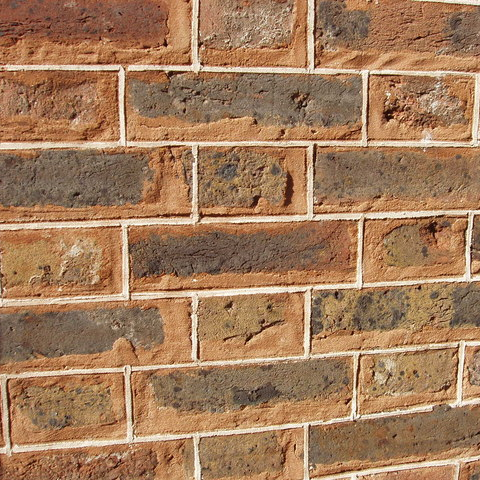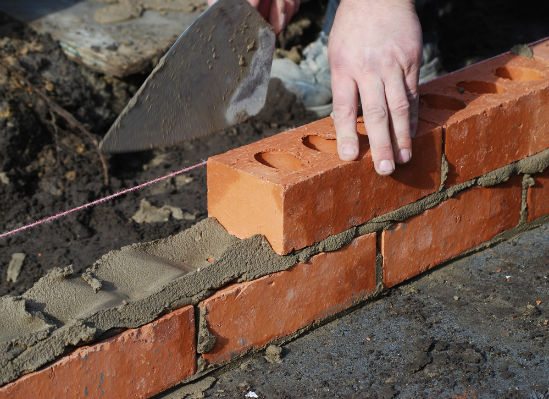Examine This Report on Roofing Contractor
Table of ContentsNot known Details About Chimney Flashing And Cap Repair Everything about Patio InstallationHow Siding Contractor can Save You Time, Stress, and Money.A Biased View of Patio InstallationThe Definitive Guide to Roofing ContractorSome Known Details About Tuckpointing

The acid dissolves all the carbonate-containing minerals not only in the binder, yet also in the aggregate (such as oyster coverings, coral sands, or other carbonate-based materials), as well as any type of other acid-soluble materials. The sand and fine-grained acid-insoluble material is left. There are a number of variants on the straightforward acid food digestion test.
Straightforward acid food digestion methods are rapid, cost-effective, and also simple to do, but the info they provide regarding the initial composition of a mortar is limited to the color and appearance of the sand. The gas collection technique gives more information concerning the binder than an easy acid digestion test. analysis approaches that have actually been made use of to review mortars consist of polarized light or thin-section microscopy, scanning electron microscopy, atomic absorption spectroscopy, X-ray diffraction, and also differential thermal analysis.
Some Known Details About Roofing Contractor
Historic mortars were not prepared to narrowly specified specs from materials of consistent top quality; they consist of a large selection of in your area obtained materials combined at the discretion of the mason. While a certain technique may be able to accurately identify the initial percentages of a lime-cement-sand mortar prepared from modern products, the effectiveness of that approach for assessing historic mortars is doubtful unless it has actually been examined against mortars prepared from materials extra typically made use of in the past.
It is a typical error to think that firmness or high toughness is a step of suitability, specifically for lime-based historic mortars. Stress and anxieties within a wall surface triggered by development, tightening, moisture movement, or settlement must be accommodated in some manner; in a stonework wall, these anxieties ought to be eliminated by the mortar instead of by the stonework devices.
High lime mortars are extra permeable than denser concrete mortars. Historically, mortar acted as a bedding materialnot unlike an expansion jointrather than a "adhesive" for the masonry units, as well as moisture had the ability to migrate via the mortar joints instead of the masonry devices. When wetness evaporates from the stonework it deposits any type of soluble salts either externally as efflorescence or below the surface area as subflorescence.
How Step Repair can Save You Time, Stress, and Money.
If the mortar does not permitmoisture or moisture vapor to move out of the wall and also vaporize, theresult will certainly be damages to the stonework devices. Sand is the largest part of mortar as well as the material that offers mortar its distinct shade, appearance and also cohesiveness. Sand should be totally free of impurities, such as salts or clay.


5 Simple Techniques For Chimney Flashing And Cap Repair
For repointing, rose city concrete should satisfy ASTM C 150. White, non- staining portland concrete may give a far better color suit for some historic mortars than the a lot more generally readily available grey rose city concrete. It should not be thought, nonetheless, that white rose city concrete is constantly proper for all historic buildings, given that the original mortar might have been blended with grey cement.
Consequently, they generally are not suggested for use on historic stonework structures. Hydrated lime mortars, and also pre-blended lime putty mortars with or without a matched sand are commercially offered. Custom-made mortars are also readily available with shade. In many instances, Get More Info pre-blended lime mortars including sand may not provide an exact suit; nonetheless, if the task calls for complete repointing, a pre-blended lime mortar might be worth taking into consideration as long as the mortar works in strength with the stonework.
If a preblended lime mortar is to be made use of, it should consist of Kind S or SA hydrated lime adapting to ASTM C useful link 207. Water must be potableclean as well as devoid of acids, antacid, or other liquified organic materials. Along with the color of the sand, the texture of the mortar is of critical relevance in replicating historic mortar.
How Chimney Services can Save You Time, Stress, and Money.
Selection of admixtures need to be made by the designer or building conservator as component of the specs, not something regularly added by the masons. Typically, contemporary chemical additives are unneeded and also may, actually, have detrimental results in historic masonry projects. The use of antifreeze substances is not advised. They are not extremely effective with high lime mortars as well as may introduce salts, which may trigger efflorescence later.
For repointing, lime needs to comply with ASTM C 207, Type S, or Type SA, Hydrated Lime for Stonework Purposes. This machine-slaked lime is created to ensure high plasticity and water retention. The usage of quicklime which must be slaked and saturated by hand may have advantages over moisturized lime in some repair tasks if money and time permit.
For repointing, rose city cement need to comply with ASTM C 150. White, non- tarnishing rose city cement might give a better color suit for some historic mortars than the more frequently available grey portland concrete. It must not be presumed, nevertheless, that white rose city concrete is constantly proper for all historic buildings, because why not find out more the original mortar may have been mixed with grey cement.
The Ultimate Guide To Paver Installation
Consequently, they normally are not recommended for usage on historical stonework structures. Hydrated lime mortars, and pre-blended lime putty mortars with or without a matched sand are readily readily available. Personalized mortars are additionally readily available with shade. In the majority of circumstances, pre-blended lime mortars having sand might not offer a precise match; nevertheless, if the job asks for overall repointing, a pre-blended lime mortar might be worth taking into consideration as long as the mortar is suitable in strength with the stonework.
In either instance, if a preblended lime mortar is to be made use of, it must include Kind S or SA moisturized lime satisfying ASTM C 207. Water needs to be potableclean as well as without acids, antacid, or other liquified organic materials. In enhancement to the color of the sand, the appearance of the mortar is of crucial value in replicating historical mortar.
Selection of admixtures must be made by the architect or building conservator as component of the specs, not something consistently added by the masons. Generally, modern chemical ingredients are unnecessary as well as may, as a matter of fact, have destructive results in historic stonework projects. The use of antifreeze compounds is not suggested. They are not very efficient with high lime mortars as well as might present salts, which might cause efflorescence later.